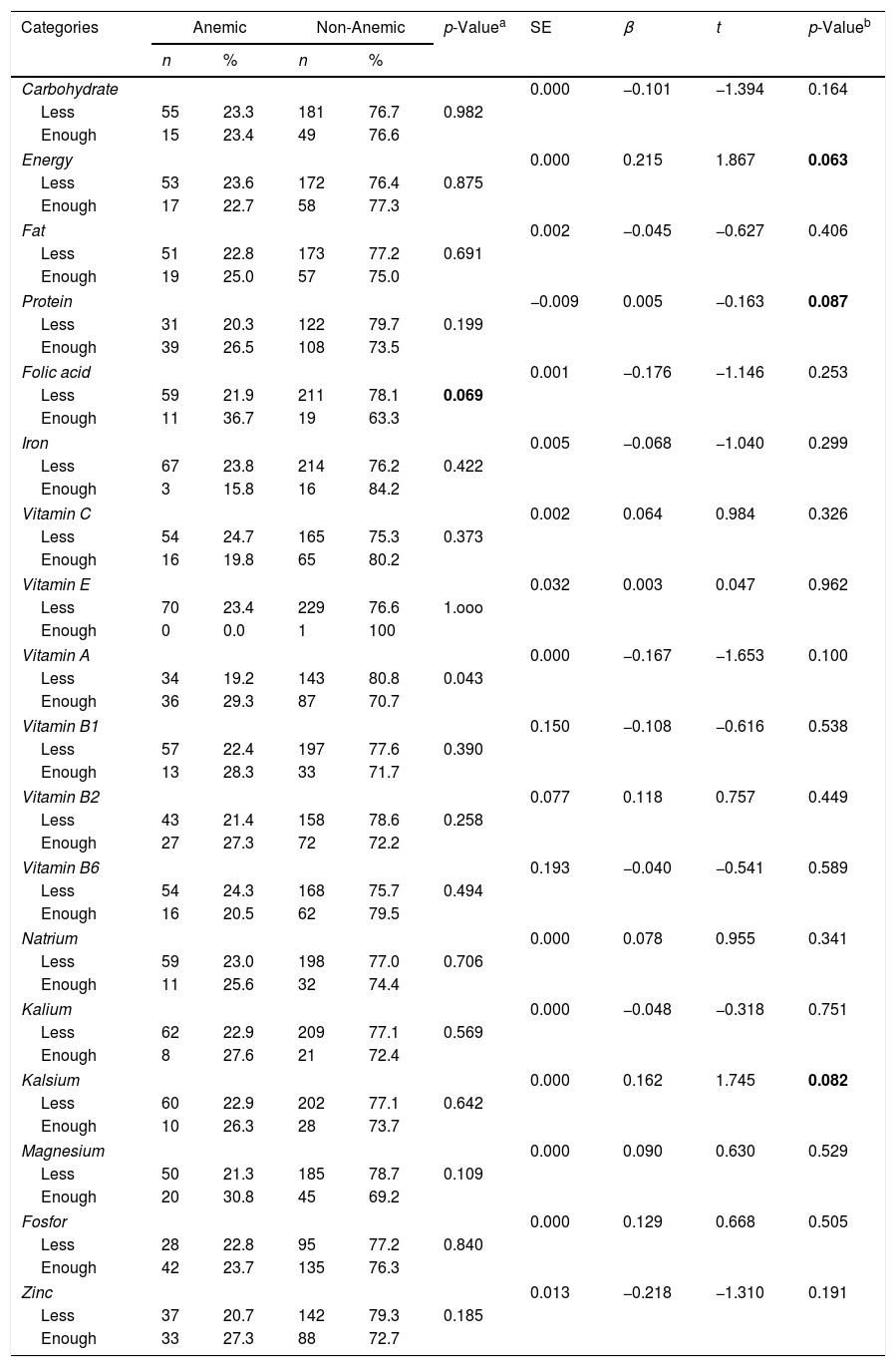
The 3rd International Nursing & Health Sciences Students & Health Care Professionals Conference (INHSP) 2019
More infoTo determine the relationship between nutritional intake and the incidence of anemia in preconception women in Takalar District.
MethodsThis study is a cross sectional study of 300 women with the criteria of married mothers aged 18–35 years. Data collection used a questionnaire, measurement of body weight, height, and upper arm circumference, and a 24-h recall. Hemoglobin levels were assessed using Hemocue. Data were analyzed using chi-square and linear regression tests.
Results23.3% of the women had anemia. Nutritional intake in the form of energy, carbohydrates, fiber, vitamins C, E, B6, iron, folic acid, sodium, calcium, and potassium has not met the standard. >80% RDA and protein, fat, vitamin A, B1, B2, Magnesium, Phosphorus, and Zinc that meet the standards. Chi-square test results showed the P-value of vitamin A (P=0.043) and folic acid (P=0.069) and the linear regression test showed P-value for energy (P=0.063), protein (P=0.087), and calcium (P=0.082).
ConclusionThere is a relationship between low nutritional intake in the form of energy, protein, calcium, folic acid, and vitamin A intake and the incidence of anemia in preconception women.











